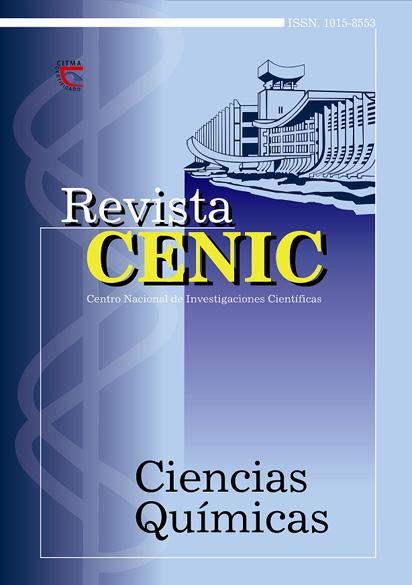Temephos granules
Abstract
Temephos is a phosphorated insecticide employed in the anti vectorial fighting program against mosquitoes
and different types of flies in the houses, rice fields, puddles, marshy lands, and also against moths, lice and different
field crops against worm, tripses and other insects. In this work the realized investigations are resumed in order to obtain
insecticidal granules of the active ingredient Temephos. The granules were elaborated using as carriers natural inerts,
such as zeolite, dolomite and calcium carbonate (range of particle size from 0.5 to 1.0 mm) by means of the classical
impregnation technology for the posterior utilization in the public health program in Cuba and other lands. The
corresponding physical and chemical analysis of the international established parameters for the quality control of the
granules were developed after the formulation, and afterwards, the granulates were subject to one year storage, at room
temperature, with the periodical interesting physical chemical controls. The concentrations of active ingredient were
determined by means of High Performance Liquid Chromatography procedure and the quality parameters using the
international standards, CIPAC and WHO procedures. Satisfactory results were obtained with calcium carbonate and
dolomite, as carrier natural inerts, and the technical active ingredient Temephos, at the concentrations 1.0 and 2.0 %,
which are able to make free slowly the active ingredient when they are introduced for a long time in water.

Downloads
Published
How to Cite
Issue
Section
License

This work is licensed under a Creative Commons Attribution-NonCommercial-ShareAlike 4.0 International License.
Los autores que publican en esta revista están de acuerdo con los siguientes términos:
Los autores conservan los derechos de autor y garantizan a la revista el derecho de ser la primera publicación del trabajo al igual que licenciado bajo una Creative Commons Atribución-NoComercial-CompartirIgual 4.0 que permite a otros compartir el trabajo con un reconocimiento de la autoría del trabajo y la publicación inicial en esta revista.
Los autores pueden establecer por separado acuerdos adicionales para la distribución no exclusiva de la versión de la obra publicada en la revista (por ejemplo, situarlo en un repositorio institucional o publicarlo en un libro), con un reconocimiento de su publicación inicial en esta revista.
Se permite y se anima a los autores a difundir sus trabajos electrónicamente (por ejemplo, en repositorios institucionales o en su propio sitio web) antes y durante el proceso de envío, ya que puede dar lugar a intercambios productivos, así como a una citación más temprana y mayor de los trabajos publicados (Véase The Effect of Open Access) (en inglés).













